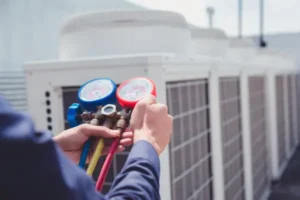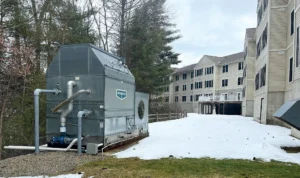The R-22 Freon refrigerant phaseout has been a long time coming. As of January 1, 2020, R-22 refrigerants can no longer be produced or imported into the United States.
Under the U.S. Clean Air Act and the Montreal Protocol on Substances that Deplete the Ozone Layer, the EPA (the U.S. Environmental Protection Agency) began the phaseout more than two decades ago to help protect the Earth’s ozone layer. Banning ozone-depleting substances, like R-22, that contain hydrochlorofluorocarbons, or HCFCs, will help reduce UV radiation exposure and greenhouse gases that contribute to skin cancer and climate change, respectively.
January 1, 2010 marked the first step of the EPA’s phaseout. The refrigerant was banned from being manufactured, imported or used in the United States, except for servicing existing facilities and equipment. Since the phaseout began, the increasing demand and decreasing supply have caused R-22 refrigerant prices to rise.
Ten years later, the ban no longer has exceptions and it is now illegal to produce and import R-22 (HCFC-22).
The essential question for facilities managers is whether to continue repairing and servicing equipment with R-22, keep the old equipment but retrofit it with a replacement, non-ozone-depleting alternative, or to replace the equipment with a new system and a new refrigerant.
Are R-22 and Freon 22 Still Available for Repairs?
Technicians have been able to service and maintain equipment using reclaimed and previously produced R-22 but the limited supply has become more scarce and more costly. Servicing these systems is becoming increasingly difficult as supply diminishes and demand continues.
Facilities with older air conditioning or refrigeration equipment can continue to get as much useful life as possible out of them until they need a repair. However, keeping an R-22 system in place can be a risk that leads an emergency replacement. Untimely equipment failures are much more expensive than a planned system update.
Is There a Replacement for R-22?
Some types of equipment may be able to be retrofitted to use a non-ozone-depleting refrigerant. You will need a system inspection to determine your options.
Though ultimately, proactively replacing a system before it fails or requires repair provides the most reliability and cost predictability. It is also likely to save you energy and money.
In Massachusetts, spring and fall are ideal times to undertake air conditioning issues and determine if it makes sense to replace your R-22 air conditioner, or if retrofitting may be an option.
Contact us today for an equipment inspection and consultation. We will make sure you have all of the information you need to decide what will work best for your facility.
Contact us to schedule an inspection and consultation.



